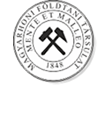- Magyar
- English
Prof. Dr. Sierd Cloetingh (Utrecht University) online előadása dec. 10-én: Europe: Natural Laboratory for Frontier Research in Earth Sciences
Tisztelt Kollégák, Tagtársak!
Prof. Dr. Sierd Cloetingh pénteken (2021. december 10.) Budapesten a Magyar Tudományos Akadémia nagytermében tart előadást amellyel egyben búcsúzik az Academia Europaea elnöki posztjától.
Az előadást az MTA youtube csatornáján élőben hallgathatják meg: https://www.youtube.com/c/MTA1825
Sierd igen sokat tett a magyar és tágabb értelemben a kelet-közép európai, de általában az egyetemes földtudomány előrehaladása érdekében. Nagy megtiszteltetés, hogy ezt az előadását Budapesten tartja meg. Ezen a péntek délutáni előadáson Prof. Cloetingh a földtudományok és az európai tudomány iránti szenvedélyét osztja meg a hallgatósággal.
Részletek: https://www.ae-info.org/ae/Acad_Main/Events/Valedictory%20Presidential%20Lecture
Professor Dr. Sierd Cloetingh (Utrecht University, Department of Earth Sciences): Europe: Natural Laboratory for Frontier Research in Earth Sciences
ABSTRACT
Integrated studies of the full Earth system across space and time scales are rapidly advancing. The International Lithosphere Program (ILP), connecting geophysical and geological sciences at their interfaces, promotes frontier research in Solid-Earth science, with high societal impact in the domains of geo-environment, geohazards and geo-resources. Probably one of the important developments in Solid-Earth science over the past decade has been the recognition of the importance of linking deep Earth dynamic processes with surface and near-surface geologic processes (e.g., Cloetingh and TOPO-EUROPE Team, 2007, Global and Planetary Change; Cloetingh et al., 2013, Tectonophysics; Cloetingh, 2020, Encyclopaedia of Solid Earth Geophysics). Deep Earth research, encompassing fields such as seismology and mantle geodynamics, has traditionally operated distinctly from fields focusing on dynamics near the Earth’s surface, such as sedimentary geology, geomorphology, and climate/paleoclimate. However, as realized by ILP, these endeavours have in common the study of Earth’s topography and the prediction of its origin and rates of change. Observations from surface studies, such as basin stratigraphy, geomorphology of landscapes, changes in surface elevation, and changes in sea level (Cloetingh and Haq, 2015, Science), provide some of the principal constraints on geodynamic and tectonic models. Conversely, deep geodynamic processes give rise to topography, thereby modifying regional climate, erosion, and sediment generation that are the basis of surface geology. The lithosphere, due to its stratified rheological structure, acts as a non-linear “filter” for deeper sources, attenuating long deformation wavelength and creating new, shorter wavelength deformation; giving a surface response more complex than that of the mantle source. It is the surface manifestations of these deep geodynamic processes modified by mantle-lithosphere interactions that have significant societal impact by (1) creating natural hazards, such as earthquakes and mass movements, and (2) controlling the distribution of natural resources including fossil fuels and geothermal energy. The relevance of research conducted in both the deep Earth and surface regimes is thus strongly enhanced through a focus on their interaction. Long-term inner Earth processes, such as mantle flow, drive the system of mantle-surface interaction. However, short-term outer Earth processes such as erosion and climate tune the response. The continental lithosphere transforms deformation generated at its base by mantle flow, but surface processes control many of the observables such as topography, sedimentation and exhumation rates, and thus further filter the source and even tune the response through cyclic processes such as climate. However, little is known on how far these interactions may go, or how these different processes are coupled or feed back into the dynamic system. At the same time, many modelling or theoretical studies suggest that erosion and sedimentation do impact the subsurface evolution of crustal deformation, changing flow patterns and magnitudes in the ductile crust and mantle through changing gravitational stresses or kinematics.
Europe through its well-studied natural laboratories, such as the Northwestern European Atlantic continental margin and the Pannonian Basin-Carpathian Mountain system of Central and Eastern Europe, is an excellent place to further advance insights in the interaction of deep Earth and surface processes. The high level of integrated solid Earth science, the existence of platforms for community building, such as Academia Europaea, TOPO-EUROPE and the European Plate Observing System EPOS are also crucial in this respect. This provides a solid foundation to connect frontier science and societal relevance in the domains of geo-energy and natural hazards on a full pan-European scale. The science base in Europe is now rapidly developing to bring geothermal energy into power in plate interiors, significantly enhancing its contribution to the energy transition in Europe and elsewhere.

























